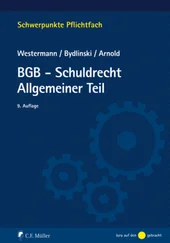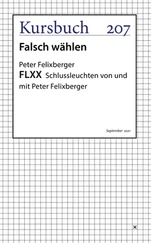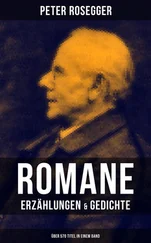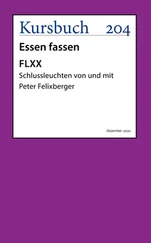She turned on the television and caught the end of the news. With all the closed highways and detours, the morning commute was a disaster. Gridlock gripped the city and by 7:00 A.M. the mayor had gone on the radio asking people to stay home. A helicopter beamed back live video of the fires that were still burning.
The bathroom had a small hotplate for making coffee. After drinking a cup, Elizabeth called Walter Jacobs’ office. He wasn’t in so she left a voice mail message. By late morning, after getting good directions from the motel manager, she set out for the university. Instead of trying to drive through the city this time, she looped around the outskirts on I-240 and came up Perkins Road, which got her to within a couple blocks of the campus.
Police were keeping the news media away from the earthquake center. Elizabeth tried to explain who she was to one of the campus cops. She showed him her faculty ID from Cal Tech, but got nowhere.
Without proper identification, no one was allowed in the building. Period.
A wave of anxiety hit her. It had happened several times already, ever since she’d arrived in Memphis and seen the damage up close. The thought kept hammering at her that they were still approaching Prable’s date of maximum seismic stress. She knew that it was highly unlikely anything else would happen, that there’d be another earthquake. Prable’s methodology remained highly suspect and questionable in her opinion. But the fact remained he’d come eerily close with his prediction for a major quake on or about January 20. At the very least, she wanted to show Prable’s data to Jacobs.
If he’d let her.
She had her doubts about that. With a crisis on his hands, he wasn’t likely to be too open to hearing what she had to say.
Deep in thought, she barely felt the tap on her shoulder.
“Are you Elizabeth Holleran?” It was a slender young woman with freckles and braided hair. She had a backpack slung over her shoulder. She held out her hand sheepishly.
“I’m Amy Price. I heard you give your name to that cop. I’m a grad student here in the geology department. I just finished reading your paper in my earth seismology class. The one about the trenching you’re doing on the San Andreas Fault. It really sounds cool.”
Her words came out in an excited, self-conscious rush. Elizabeth was genuinely flattered that Amy was so obviously happy to meet her. The kid was even blushing. Then Elizabeth had a thought. She told her that she needed to get into the earthquake center’s building to see Walter Jacobs. That it was very important. She wanted to know if there was another entrance.
“No problem,” Amy said, happy to be of service. “Follow me.”
She led Elizabeth behind the two homes that served as offices for the earthquake center and the university’s geology department. The center occupied one house, which it shared with the USGS. The geology department the other. A driveway and narrow expanse of lawn separated them.
The geology building wasn’t guarded. Amy took Elizabeth through the back door and led her into the basement.
“I think half the department is already down here,” she said.
“Doing what?” Elizabeth asked, puzzled by the trip through the basement.
Amy smiled and said, “Trying to listen.”
The two homes, she explained, had once been the university’s student health center and were connected by a tunnel. As many as ten grad students were sitting on the narrow flight of steps that led up to a door that opened directly inside the earthquake center’s building. The door was closed, but not locked.
“They’re having a big meeting up there about the earthquake,” Amy said, lowering her voice to a whisper. “We’re trying to hear what they’re saying.”
“It just got started,” one of the students said, a heavyset kid with shoulder-length hair tied back. “They’re all in Walt Jacobs’ office.”
MEMPHIS
JANUARY 11
1:10 P.M.
THE SEISMOLOGISTS SAT IN WHAT HAD ONCE BEEN a front room. Plywood boards covered the windows that had broken during the earthquake. The atmosphere was tense, expectant. The eleven people in attendance included some of the biggest names in earthquake research. Four, including Atkins and Guy Thompson, were with the USGS. Walt Jacobs represented the Center for Earthquake Studies.
As chairman of the five-state Seismic Safety Commission, Paul Weston led the group. His first order of business was to swear all the participants to secrecy.
“I don’t have to tell any of you how important that is,” said Weston.
He turned the meeting over to Guy Thompson. Atkins noticed he’d tied his long, black hair in a ponytail. He’d also changed shirts. He was wearing another Western number that was a bright blue satin. He still had his CD player clipped to his leather belt and a pair of headphones looped around his neck.
Thompson apologized to the group in advance. He was making the final adjustments on his projector. “This might be a little rough,” he said. “We haven’t had time to smooth any of these images out, to enhance them. I’m seeing this for the first time myself.”
The seismic P- and S-wave patterns recorded during the quake and fed into his battery of computers produced an image none of the participants had anticipated. As it was projected on a large screen on the wall, there were audible gasps.
The two-dimensional image—a dark line overlaid on a topographical map—showed that the New Madrid Fault, or at least a major branch of it, extended much farther south than anyone had imagined. It looked like the southwest arm of the fault extended nearly twenty miles south of Memphis. Originally, that segment was thought to have ended roughly forty miles to the north of the city. Nearly sixty miles long, this weak spot deep in the earth had been there all along, hidden and unnoticed, waiting to come to life.
Atkins and the others were shocked. The New Madrid Fault had nearly doubled in size.
One of Thompson’s computer-enhanced graphics showed a cross section of the earth’s crust.
“You can see how the velocity and direction of the waves changed as they neared the surface,” he said, studying the computer images on the screen. The lights were dimmed. The seismic waves had changed direction and picked up speed and power when they hit different rock layers. There appeared to be an unusually thick layer of soft sediments deep below Culp’s Hill.
“That’s the kind of focusing effect that can double, sometimes triple the velocity of the surface waves,” Thompson went on. “That’s why the shaking was so severe in that part of the city.”
“Can you delineate the fault any better?” asked one of the geologists from the University of Memphis.
Shaking his head, Thompson said it was too far down in the crust, nearly thirty kilometers. His imaging techniques were a lot like CT scans and sonograms. The images were created by piecing together faint echoes as the seismic waves were reflected from buried rock layers and faults. The images were rarely sharply defined; at best the fault could be seen only indirectly.
“About all we can say for sure is that the major pulse of seismic energy traveled in a southerly direction along a previously unknown fault. The epicenter near Mayfield, Kentucky, was the likely trigger.” He projected a map of Tennessee, Kentucky, and Missouri on the screen.
“The seismic waves really picked up velocity when they hit faulting deep below the Memphis area. It was like ringing a bell.”
The surprising thing to Atkins was that the damage hadn’t been far worse. The miles of sediment that covered the fault must have deflected or diffused the seismic energy. The exceptions were at places like Culp’s Hill, where it had literally burst through the crust.
Читать дальше












